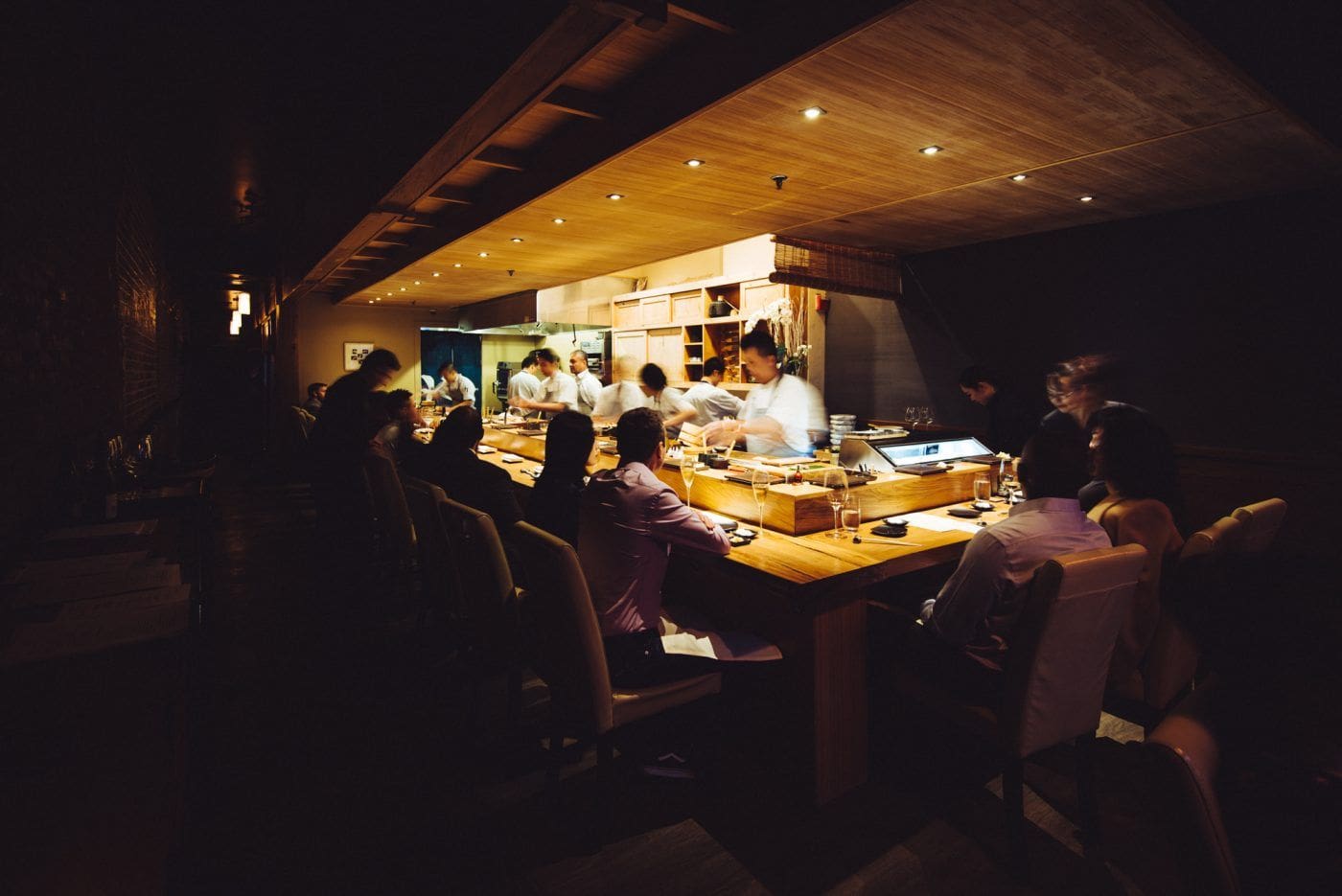
KUSAKABE
Kaiseki-style sushi restaurant in the financial district in the heart of San Francisco
Kusakabe is a kaiseki-style sushi restaurant in the financial district in the heart of San Francisco. It’s a cozy restaurant with 29 seats (including 12 table seats). It’s a popular store, despite being a high-class restaurant offering only two omakase, or "chef's choice" courses. Customers can order extras a la carte once they finish a course. The kaiseki sushi is so genuine it received one star in the Michelin Guide in 2016 and 2017. However, it has few Japanese customers, with over 90% being locals, many of whom are regulars.
<Chef Kusakabe, an earnest researcher, talks about providing traditional Japanese food that the locals will like.>
Chef Kusakabe moved to San Francisco, where he had family, from Kyoto 25 years ago. He decided to open his own restaurant in San Francisco and returned to Japan, training at a Japanese restaurant for 10 years before going back to America and studying sushi. He was impressed by the depth of sushi and the culmination of his work was becoming world champion in 2008 as a representative of America in the Eat-Japan World Sushi Awards, an international tournament which is also known as the Academy Awards of the sushi world. Fully prepared, he opened Kusakabe in 2014. Chef Kusakabe continues his research even now based on the concept of imparting traditional Japanese food techniques through sushi. Having said that, he doesn’t try to force one correct way of Japanese food. Chef Kusakabe says “I use traditional Japanese food as a base, then change it up to suit the tastes of the locals. That is the fun in having a restaurant in America.” Recently there has been an increase in the number of people in America interested in cultural foods. Even many locals who have had no interest in Japanese food hear of its reputation and come to try it. Some have never eaten Japanese food before. Chef Kusakabe comments, “A person's taste in food is a cultivated individually, so it’s not as easy as suddenly bringing food from Japan and expecting them to like it as it is. It's my obligation to help people who don’t know about it enjoy it.” In San Francisco he often goes to restaurants that don't serve Japanese food to study and experience the overall operation, not just the food, but also how they take reservations and the restaurant's presentation. On the other hand, he’s also diligent about going to restaurants that value Japanese traditions when he returns to Japan.
<Japanese salt and vinegar go best with Japanese cooking.>
Kusakabe uses a lot of Japanese ingredients. There are some unique things you can only get in Japan. They are important for Japanese cuisine. He mostly uses main ingredients, such as fish, that are produced in Japan, but he is most particular about seasonings. Chef Kusakabe says, “Seasonings that suit Japanese cooking, such as vinegar and salt, need to be Japanese.” On the other hand, there are things he tries because he is in America. For example, he chooses to use Californian rice. The quality of Californian rice has improved and he uses a blend that goes well with sushi that he researched and created himself. Chef Kusakabe says, “Because I’m here I want to make something that you can only get in America.”
It’s difficult to say specifically what makes Japanese food accepted by the locals, but Chef Kusakabe says he is gradually learning it intuitively. Japanese cooking techniques are also applied to sushi. Kusakabe is a restaurant that stays classical while making it easy for beginners at Japanese food to enjoy.
